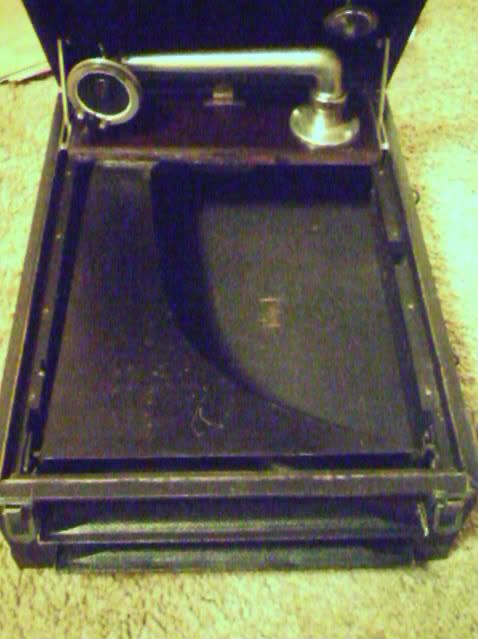Lenoirstreetguy wrote:The Plano Reflex tone arm seemed to have been the feature of the 1929 line. This ad is from October 1928 and gives all the news that's fit to print. I've never heard one of these, but they say they sound quite nice. I had a dickens of time scanning this because as you can see The Graphic that this came from is far bigger than my scanner. ( That's the English news magazine The Graphic, not the Amberola Graphic. )
I have wondered though if Columbia's analogy between sound and light really holds up because of the vast difference in frequency between sound and light.
Jim
Many thanks for posting the image and the information. I seem to remember reading that they were introduced around 1929, and that pretty well confirms it.
I'm no scientist, but I question whether the analogy behind the Plano-Reflex principle is even remotely correct. Seems to me, a light beam is
slightly different than a sound wave. Along this line, it doesn't seem to take into account the air pressure changes within the chamber caused by the fluctuating diaphragm--the column of air pushed back and forth by the back and forth movement of the diaphragm, itself.
If there is an advantage over the previous designs Columbia produced, I'd guess that it had more to do with the fact that the horn expands at a more or less constant/exponential rate, in spite of the flattened surfaces, and is generally longer and larger than those fitted into the earlier models.
Of course, the
ideal tone chamber, as Edisone noted, would have NO bends or flattened areas between the sound box's throat and the horn's mouth -- kind of like a giant, exponential version of the front-mount models.
BTW, there was one of the larger Plano-Reflex floor models for sale on the UK eBay board awhile back -- similar to this one --
Click Here -- but it garnished little interest from the local collectors. Too bad these NEVER seem to surface in the US market.
OF
